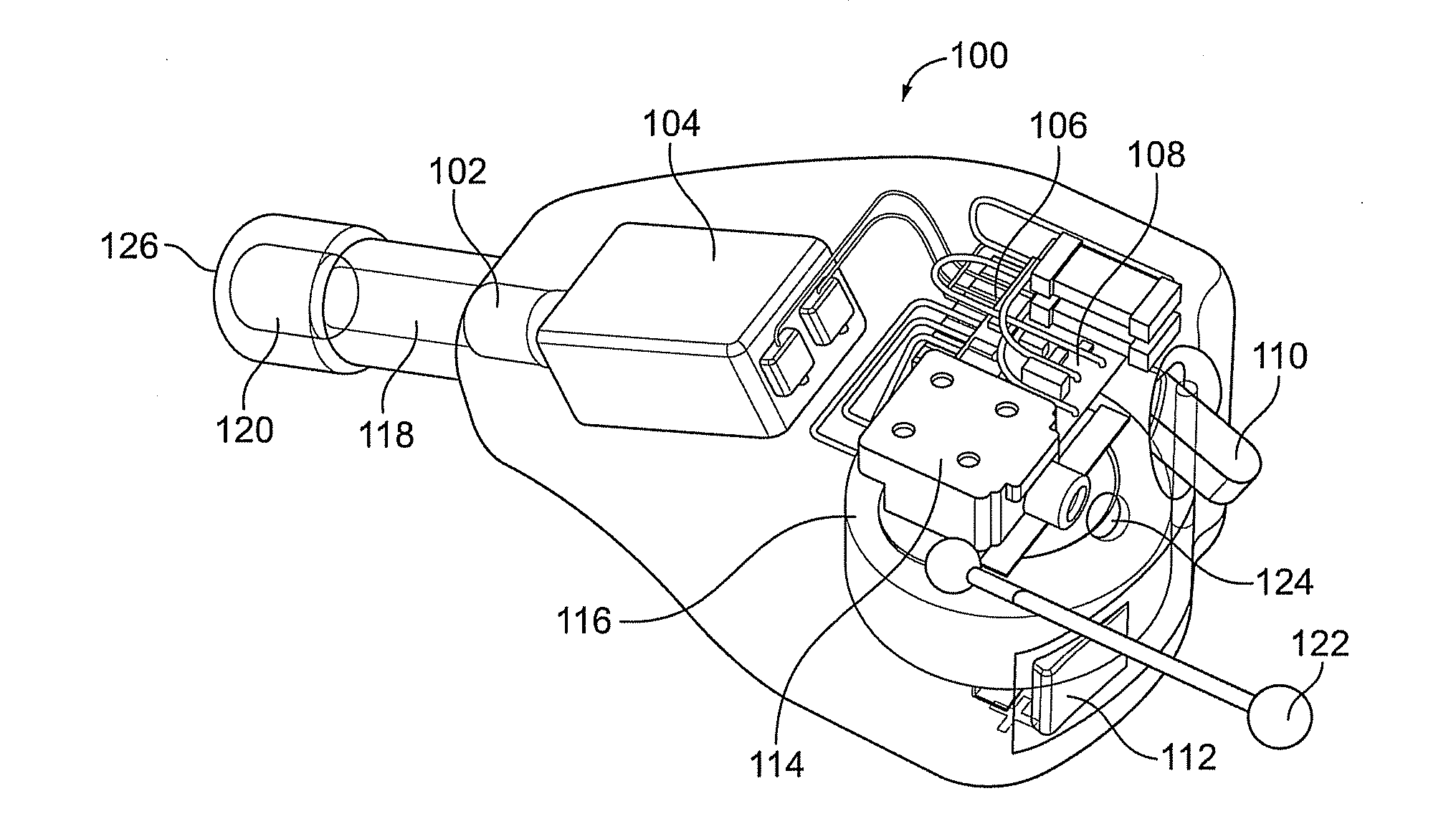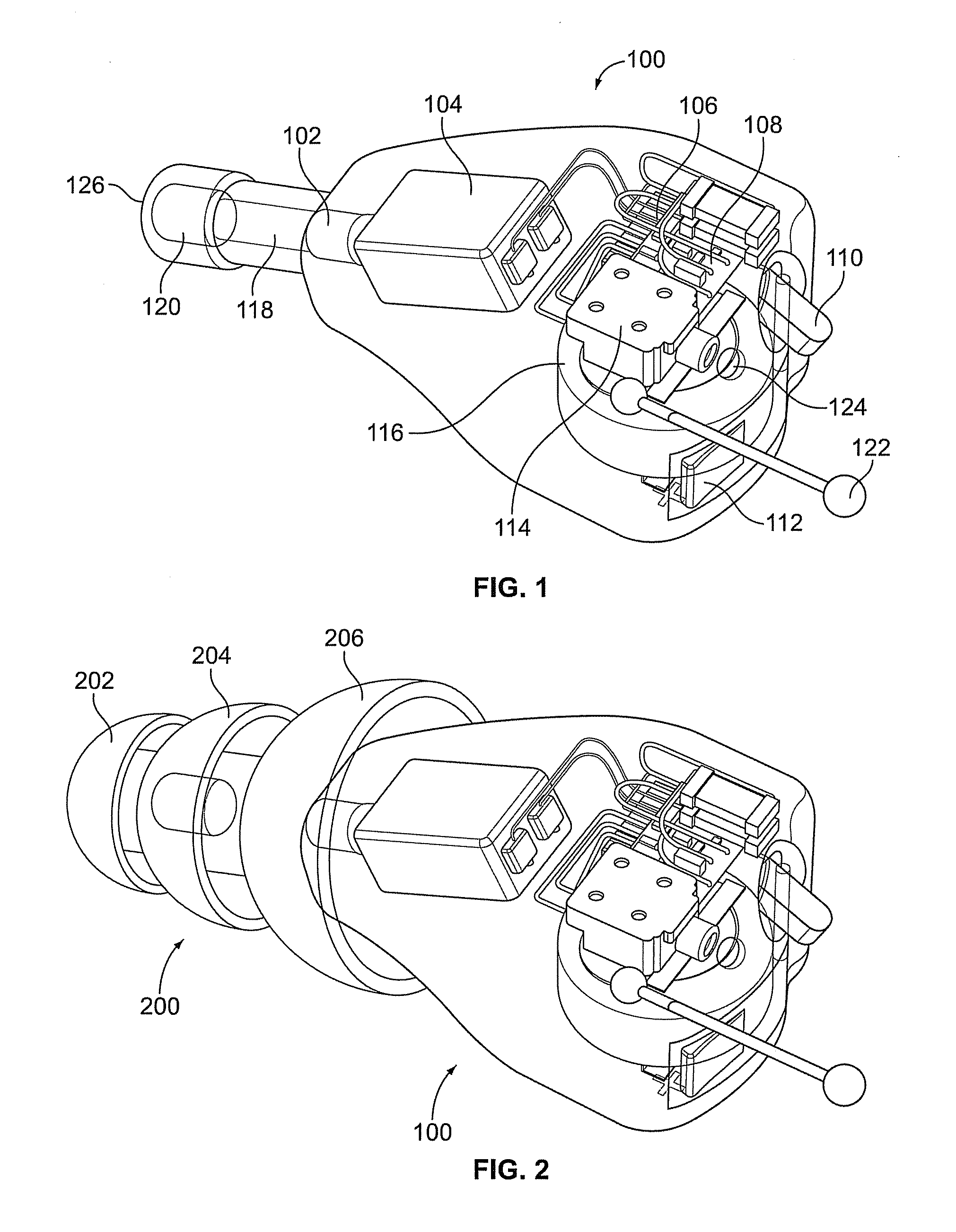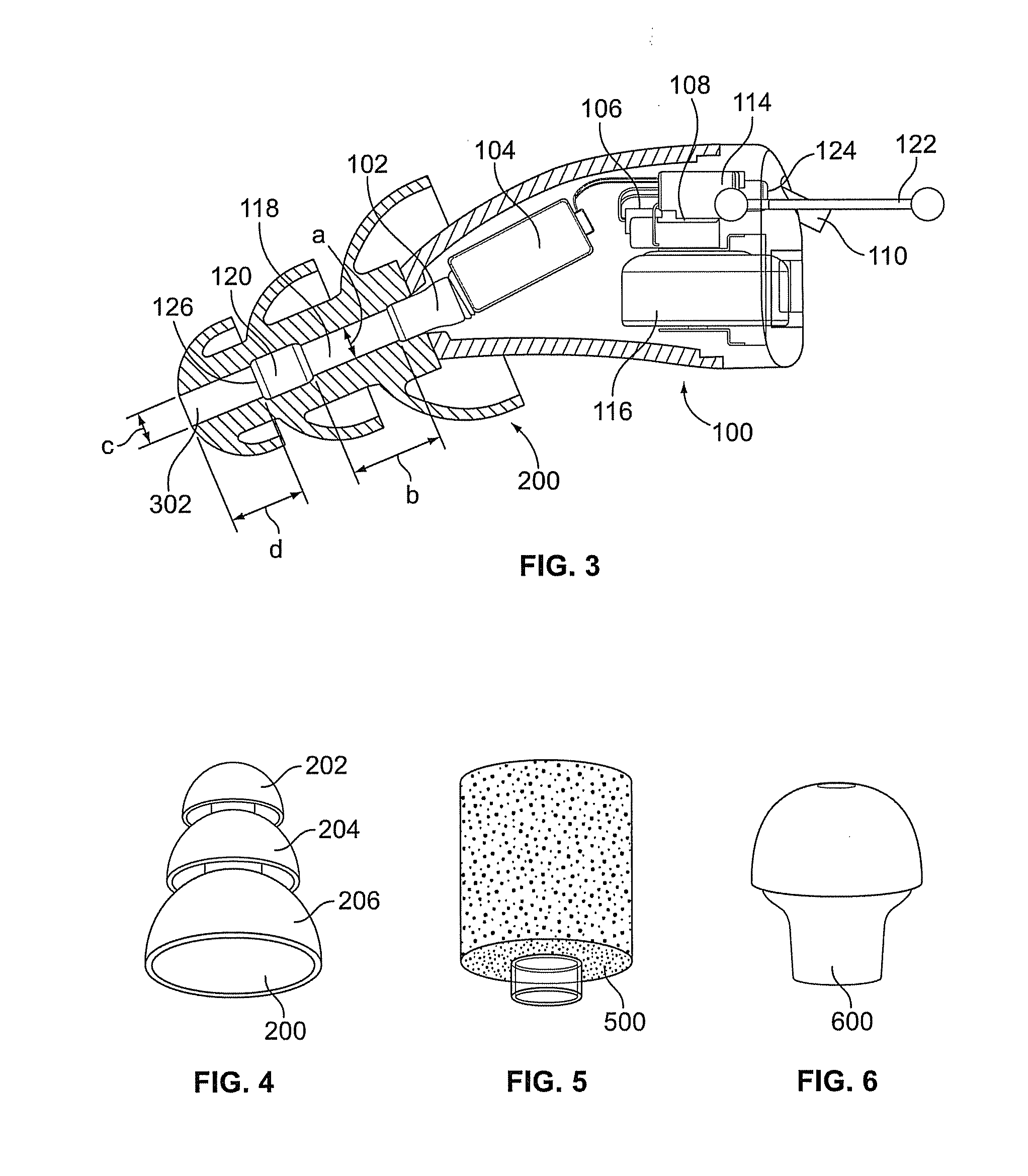Electronic earplug with transistor switching for introducing electronic control of the gain and providing audible switch indications
a transistor switching and electronic ear plug technology, applied in the direction of ear plugs, ear treatment, earmuffs, etc., can solve the problems of high risk of hearing loss for military personnel exposed to firearm blasts, explosions and other high-level peak noises, 68% of deployed soldiers returning with ear damage, and 100% do not protect both ears
- Summary
- Abstract
- Description
- Claims
- Application Information
AI Technical Summary
Benefits of technology
Problems solved by technology
Method used
Image
Examples
Embodiment Construction
)
[0092]Embodiments of the present technology provide electronic earplugs, methods of enhancing and / or attenuating sound using electronic earplugs, and kits including electronic earplugs. Embodiments of the present technology further provide transistor switching for introducing electronic control of the gain of electronic earplugs and providing audible switch indications when switching between gain level settings.
[0093]The realization that it would be practical to make such a device came partly from considering experiments performed at the request of applicant's company by E-A-R Cal Laboratories. These experiments found that the attenuation of both foam eartips and triple-flange eartips, when combined with a miniature insert earphone such as the Etymotic ER-4 or ER-6i, was equal to or perhaps a dB or so greater than the attenuation of the foam or triple-flange eartip itself (which is normally manufactured without the sound channel down through the middle). Thus with the applicant's w...
PUM
 Login to View More
Login to View More Abstract
Description
Claims
Application Information
 Login to View More
Login to View More - R&D
- Intellectual Property
- Life Sciences
- Materials
- Tech Scout
- Unparalleled Data Quality
- Higher Quality Content
- 60% Fewer Hallucinations
Browse by: Latest US Patents, China's latest patents, Technical Efficacy Thesaurus, Application Domain, Technology Topic, Popular Technical Reports.
© 2025 PatSnap. All rights reserved.Legal|Privacy policy|Modern Slavery Act Transparency Statement|Sitemap|About US| Contact US: help@patsnap.com



